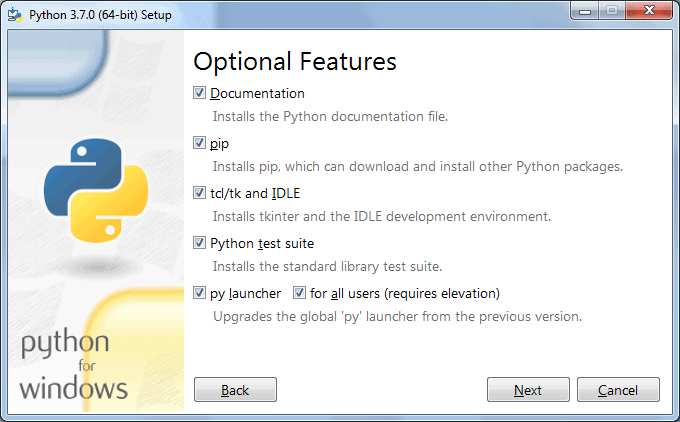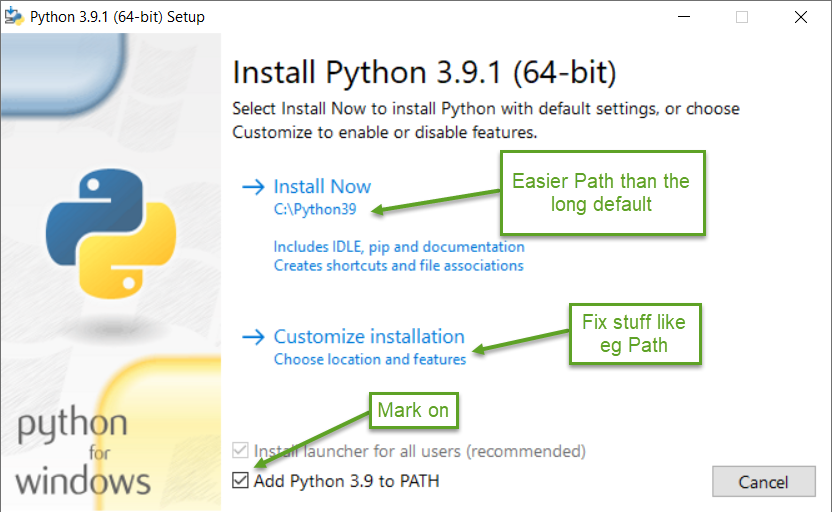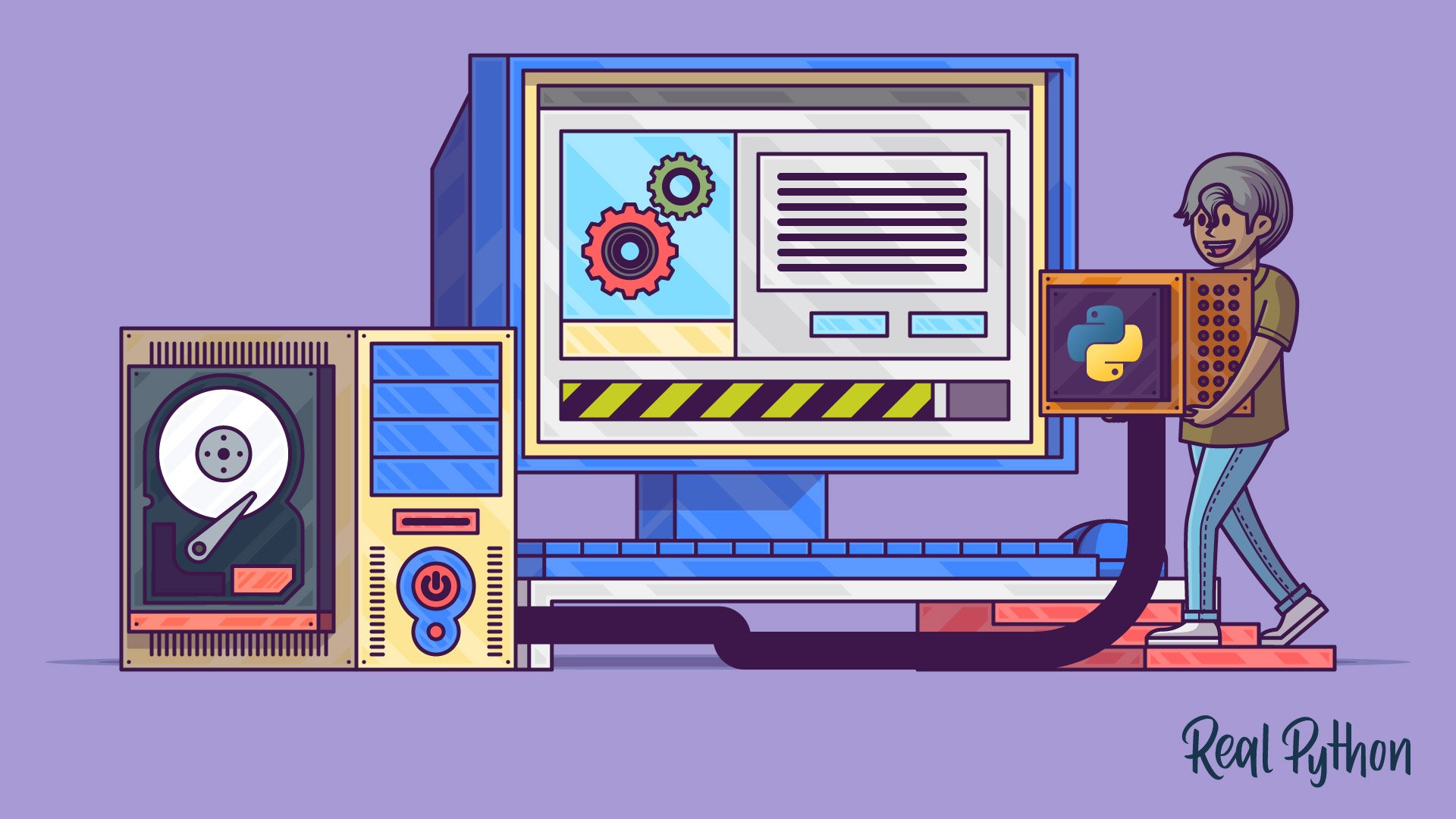

- #Python 3 install location how to#
- #Python 3 install location upgrade#
- #Python 3 install location download#
- #Python 3 install location windows#
To delete the environment simply delete the environment directory. If your application no more required the virtual environment, You can delete this.
#Python 3 install location download#
2, 2018 Download Release Notes Python 3.7.0 JDownload Release Notes Python 3.6.6 JDownload Release Notes Python 2.7. 2, 2018 Download Release Notes Python 3.4.9 Aug. 20, 2018 Download Release Notes Python 3.5.6 Aug. |████████████████████████████████| 163kB 18.6MB/sĪfter finishing your work inside the virtual environment, simply exit from this by typing deactivate command. 20, 2018 Download Release Notes Python 3.6.7 Oct. For example: (isoEnv) $ pip3 install nose You can use ‘nose’ if you’re going to work with openstack.
To install a specific version of a package, run the following command: pip installTo verify the correct Python version, run the following: (isoEnv) $ python -VĪny package that you install using pip is now placed in the virtual environments project folder, isolated from the global Python installation. The name of the current virtual environment appears to the left of the prompt. C:>where python C:PythonPython 3.9python. To activate the virtual environment, execute: source isoEnv/bin/activate We can directly use the where python command in the command prompt to find Python’s installation folder in windows.

This will insure to install all modules and configurations to virtual environment only.

You need to activate virtual environment before using it. The above command will creates a separate environment for the Python binary file. New python executable in /var/webapps/isoEnv/bin/python3Īlso creating executable in /var/webapps/isoEnv/bin/python Running virtualenv with interpreter /usr/bin/python3Īlready using interpreter /usr/bin/python3 The previous command may not work if you have both Python versions 2 and 3 on your computer. This installs boto3 for your default Python installation. You can also define the environment directory on a different location. Type pip install boto3 (without quotes) in the command line and hit Enter again. You can change the environment directory name ( isoEnv used in below example) as per your choice. Then, create a separate environment for your Application. Next, switch to your Python application directory cd /var/webapps/ which python3Īs per the above command, Python 3 binary is available at /usr/bin/python3. For example, you can install the latest version of Python from ActiveState (Python 3.9), which includes pip3.
#Python 3 install location upgrade#
If your python version is less than 3.4, then you should upgrade your Python version which will automatically install pip3. Use the following command to find the Python 3 binary file location on your system. Python 3.4+ in most operating systems includes pip3 by default. Search for the Python3 binary location on your system. Installing collected packages: virtualenv
#Python 3 install location windows#
( cypri will be replaced by your windows user name of course) This is not convenient, because AppData is a hidden folder and it may cause problems with some python modules such as jupyter if you leave it here. We use virtualenv package to create virtual environment for the Python applications. By default, it installs in the path: C:\Users\cypri\AppData\Local\Programs\Python. You must have Python 3 and PIP installed on your system. You must have the following packages installed on your system.
#Python 3 install location how to#
This tutorial will help you to how to create a virtual environment for your Python application and use this. The Virtualenv is the easiest and recommended way to configure a custom Python environment. It is very helpful for the application required separate environments on the same server. This doesn’t share libraries with other environments. This environment has its own installation directories and environment. If you wish to stick with your previous version of Python, you may apply the steps below to manually add Python to Windows path. Method 2: Manually add Python to Windows Path. Alternatively, you may manually add the paths into the Environment variables. Python Dictionaries Access Items Change Items Add Items Remove Items Loop Dictionaries Copy Dictionaries Nested Dictionaries Dictionary Methods Dictionary Exercise Python If.Else Python While Loops Python For Loops Python Functions Python Lambda Python Arrays Python Classes/Objects Python Inheritance Python Iterators Python Scope Python Modules Python Dates Python Math Python JSON Python RegEx Python PIP Python Try.Virtualenv is a tool used to create an isolated Python environment. Finish the installation, and you should be good to go.


 0 kommentar(er)
0 kommentar(er)
